‘Class of ’27’ Shows How Politicians and Mainstream Media Fail Rural America
The documentary series, which explores educational systems in rural communities across the United States, highlights the effects of poverty often overlooked in our political dialogue.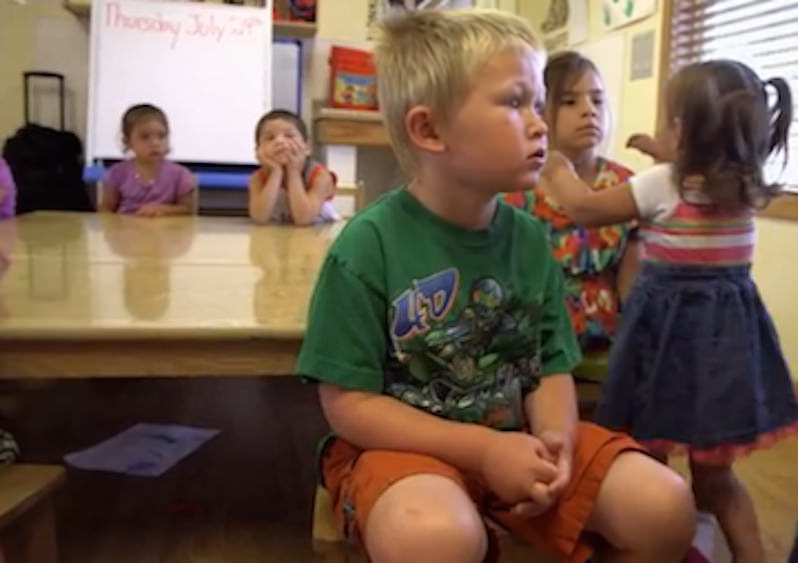
The most provocative political statements often are delivered through artistic expression. This is most certainly the case in “Class of ’27,” a collection of short films revealing the successes and limitations of children’s education in rural communities across the United States.
“Class of ’27” premiered Tuesday as part of public media’s “America Reframed” series. The hourlong documentary brings viewers to a remote county in Kentucky, an indigenous community in Minnesota and isolated farms of the Pacific Northwest.
Beneath these deeply personal explorations into small communities lies an underlying national narrative: that the various effects of poverty have the potential to disrupt future generations. In each of the three films, these challenges are met by passionate educators determined to make a difference and improve the possibilities for the current young generation.
The first film in the series showcases a preschool in Owsley County, Ky. On the weekends, schoolchildren are sent home with spare food so they don’t get hungry. Many of the families have been torn apart by the opioid epidemic, and young children are often cared for by their grandparents.
The teachers and organizers of the rural community fight these challenges head-on. “We have a goal: to keep them in school,” Cleda Turner, director of Owsley County Outreach, explains in the film. She helped coordinate the weekend meal program to combat child hunger in the community. “The dropout rate, it’s not as high as it was. And behavior has improved in the elementary [school]. ’Cause they’ve got food in their bellies. A hungry child cannot learn like a child that’s got food in its belly. Common sense—[but] we as Americans forget that.”
The second film in the series revolves around White Earth Nation in Minnesota. Educators not only teach the preschoolers their ABCs but pass along native traditions to the younger generation. As in Owsley County, the teachers are passionate and creative problem-solvers in the face of poor funding.
The third and final vignette in the series follows a migrant couple, Gerardo and Celia, and their children as they travel to Oregon’s Willamette Valley to spend the summer working in the berry fields. The couple’s young children are enrolled in Migrant Head Start, and although the teachers have only several months to work with their kids, they are determined to help these students progress. “Some of them do go to school during the rest of the year, but most of them just have someone who watches them during the day while their parents work,” Aimee Brown, a teacher in the program, says in the film. “For most of them, this is their main source of a school setting.”
James Rutenbeck, director of the first vignette and executive producer of the entire series, explains how he chose the diverse settings for each of the short films. “I was looking at rural outposts across America that would be diverse,” he told Truthdig. “In each of the cases of the three films, when we were researching them, we were trying to maintain really high standards about the quality of the programs of each place. And we never intended the films to be about programs … but we wanted that piece to be a part of each of those stories.”
Rutenbeck says Owsley County’s phenomenal Head Start program made it an ideal subject. “There were actually three counties I looked at in eastern Kentucky, but Owsley County was the most impressive just in terms of the quality of the work that was going on there,” he said. In fact, Owsley County is often cited as one of the poorest in the nation. “We didn’t go there for that reason,” Rutenbeck explains, “and yet there are a lot of people who go there for that reason. It’s like a destination for poverty pornographers.”
“Class of ’27” was created to showcase the importance of early childhood education, but a strong political narrative is woven throughout the films. The lack of funding in education is one of the most prominent factors linking the three short pieces.
“The money is always vulnerable. I think the teachers, generally, are underpaid, and they do work that is so critically important, and yet it’s underrecognized,” Rutenbeck says. “I think there’s an underlying message in all the films that this would be a really critical place to invest.”
This sentiment is expressed early as “Class of ’27” opens. Acclaimed author Silas House, who grew up just a few counties away from Owsley, introduces the first film. “The only places I have seen education in this area lacking has been in budget,” he told Truthdig. “It’s not lacking when it comes to teachers or intelligence of the populace. The problem is that we don’t get as much funding in these rural areas.”
Native American activist and author Gyasi Ross, who introduces the second vignette, explains the challenges of unique educational programs, such as that of White Earth Nation. “With a localized model—you have a tribe, for example, that has its own pre-[kindergarten] program, or even in further grades an immersion school, a language school—those schools are woefully underfunded,” he told Truthdig. “Even though those localized folks oftentimes have the right solutions, they don’t have the administrative [or] monetary support in order to fully execute their localized vision.”
In considering both of these communities, it’s important to acknowledge the historical context that has led to the lack of financial support. Rural Appalachia has always been overlooked when it comes to federal funding, a topic House has written about extensively.
These historical implications often feed into a damaging voter pattern that contributes to further obstacles. House explains how there’s a “propaganda campaign”—largely produced by the coal industry—that convinces people to vote “against their own best interest.” This propaganda often relies on the widespread poverty of the area to emotionally affect communities. For example, advertisements might blame President Obama for destroying the coal industry and causing a lack of jobs.
“The people I know, for instance, who are pro-Trump, almost all of them would say it’s because they don’t want another term of Obama in Hillary,” House explains. “And they see Obama as having killed our economy. [But] the way I see it, the industry itself has taken jobs away from the region.”
Similarly, Ross explains how the federal government is accountable for much of the poverty among Native American communities throughout the U.S. Historically, Native American children faced extreme dangers while being “assimilated” into mainstream education. “Our introduction into Westernized education was extremely violent, it was extremely predatory,” Ross says.
He too argues that large corporations deserve much of the blame for creating desperate communities. For instance, the opioid epidemic—a prevalent problem in the first two vignettes—does not receive the media attention it merits. This lack of coverage applies to other issues in Native American communities as well, such as the current protests over the Dakota Access pipeline.
“Both the pharmaceutical lobby, as well as the oil and energy lobby, is huge. They have a few bucks to spare on media strategies,” Ross says. “Similarly, there’s been a silence regarding that opioid addiction.”
And, House explains, corporate propaganda is often introduced to communities’ youngest members. “When my daughters were in elementary school, the coal industry would come into their classrooms and give them T-shirts,” House notes.
Educational obstacles, like broken families and child hunger, are constant influences in the lives of rural Americans—even if these topics are underreported by the media. “I feel like there’s this need for people to talk about this,” Rutenbeck says. “The whole issue of hunger, and drug abuse—it’s not anything that anyone shied away from, or tried to hide. It’s something people are very open about, because they recognize that it’s a problem. And they want to deal with it.”
So why aren’t these problems being addressed in our current political dialogue? Both Ross and House argue that most people aren’t looking at the big picture. The mainstream media, for example, seize on to particular narratives without giving the full story.
“There’s so many young people who are working on new initiatives. For instance, there’s a great food movement in Appalachia. People [are] tiring of these food deserts we live in, and making bigger farmers markets, and putting together food summits,” House explains. “So things are changing. But those sort of stories don’t make it into the news as often as stories like the one that came out today in The New York Times, where they went to Kentucky and interviewed a few people who are voting for Trump. There’s not a lot of complexity in that coverage.”
And, House adds, it’s not just the mainstream media that are failing to cover rural issues—Hillary Clinton and Donald Trump are also ignoring a key portion of American society. “I wish both of them were talking more about rural people,” House laments. “It seems that both of them spend a lot of time talking about what we all fear and making us fear that even more. Often I feel that they are not talking about the real issues that impact us as Americans. [But] it gets more media when you talk about things that involve fear.”
Rutenbeck expresses similar dissatisfaction with the way the media are covering the current election. ““Everything’s being drowned out by the Trump factor. We’re not really talking about anything except for Trump,” he says. “It’s very dispiriting.”
This underlying theme of economic inequality, which ties the three films together, has largely been abandoned in the current political conversation. Although Bernie Sanders once championed the cause, many argue that this progressive issue was abandoned when he endorsed Clinton’s presidential campaign.
“Bernie absolutely had a palpable and quantifiable, amazing amount of support within Indian country,” Ross states. “I was amazed that he endorsed Hillary, ultimately.” He explains that the political fervor created by Sanders has begun to dissipate among Native American voters. “Those who are going to vote are going to vote Hillary. But ‘those who are going to vote’ takes on a different meaning than it did four months ago. ‘Those who are going to vote’ four months ago was a much broader universe than it is now,” Ross says.
In the face of these serious issues, political participation is more important than ever. “Class of ’27” demonstrates firsthand how younger generations are affected by current political policy. “Disparity filters down. It’s not an abstract economic concept,” Rutenbeck says. “It filters down into achievement levels.” He cites the work of economist James Heckman, who found that investment in early childhood education produces “the highest rate of return.”
“Poor health, dropout rates, poverty and crime—we can address these problems and substantially reduce their costs to taxpayers by investing in developmental opportunities for at-risk children,” says one analysis of Heckman’s findings.
Despite this clear, objective evidence, however, the programs showcased in “Class of ’27” aren’t on solid ground. “Every three or four years you hear some Republican saying that there’s very little benefit from [Head Start] and the initiative should be cut,” Rutenbeck says. “I think that would be really disastrous.”
Ultimately, stories like those shown in “Class of ’27” help to contradict mainstream stereotypes about rural communities. “We have to take control of our own narrative,” House says. “I think that’s what I love about ‘Class of ’27’—it allows people to tell their stories. It’s not a collection of talking heads.”
And although these rural communities face extreme challenges, the underlying message of “Class of ’27” is one of hope. Rutenbeck describes what he sees as “the big looming question” of the film series:
Will these kids graduate from high school? I think the main thing is that they have a life that’s productive and happy, whatever it is. If there was just quality child development … they’re up against a lot. I guess “Class of ’27” could almost have a question mark after it. … It’s a complicated world. And when you’re living in poverty, things just get more complicated. So I’m just not sure. But I want to be hopeful, and I want to root for these kids.
Many of the obstacles in the film may not have easy solutions, but House mentions one crucial takeaway. “Education is the key to all of it, I believe,” he explains. “I went to a small public school in eastern Kentucky, and I knew that we had a lot of budget issues. But we had great teachers and great administrators, and we had great people working in the lunchroom. We felt like people cared about us and wanted us to learn … that’s the thing that kept me going.”
“Class of ’27” reveals the common economic struggles that link diverse sections of this nation together. As the November election approaches, the film serves as a reminder of the implications of economic inequality. Mainstream media and American politicians should be discussing the topics portrayed in the film: poverty, corporate lobbying, drug addiction and child hunger, to name a few.
Continuing to ignore these issues will only harm future generations, Rutenbeck says. “I think most people care about their own kids, but I think as a country we need to move a little bit beyond our own families and try to look at all children. That’s my hope for these films — that [they] will remind people that children don’t choose where they are born or their life circumstances.
“We as a country need to respond when they’re in a bad place,” Rutenbeck says. “They are our children, too.”
Your support matters…Independent journalism is under threat and overshadowed by heavily funded mainstream media.
You can help level the playing field. Become a member.
Your tax-deductible contribution keeps us digging beneath the headlines to give you thought-provoking, investigative reporting and analysis that unearths what's really happening- without compromise.
Give today to support our courageous, independent journalists.

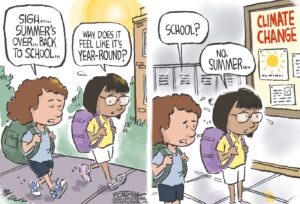
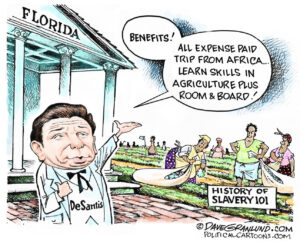
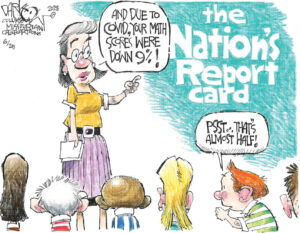
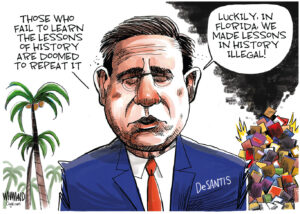

You need to be a supporter to comment.
There are currently no responses to this article.
Be the first to respond.